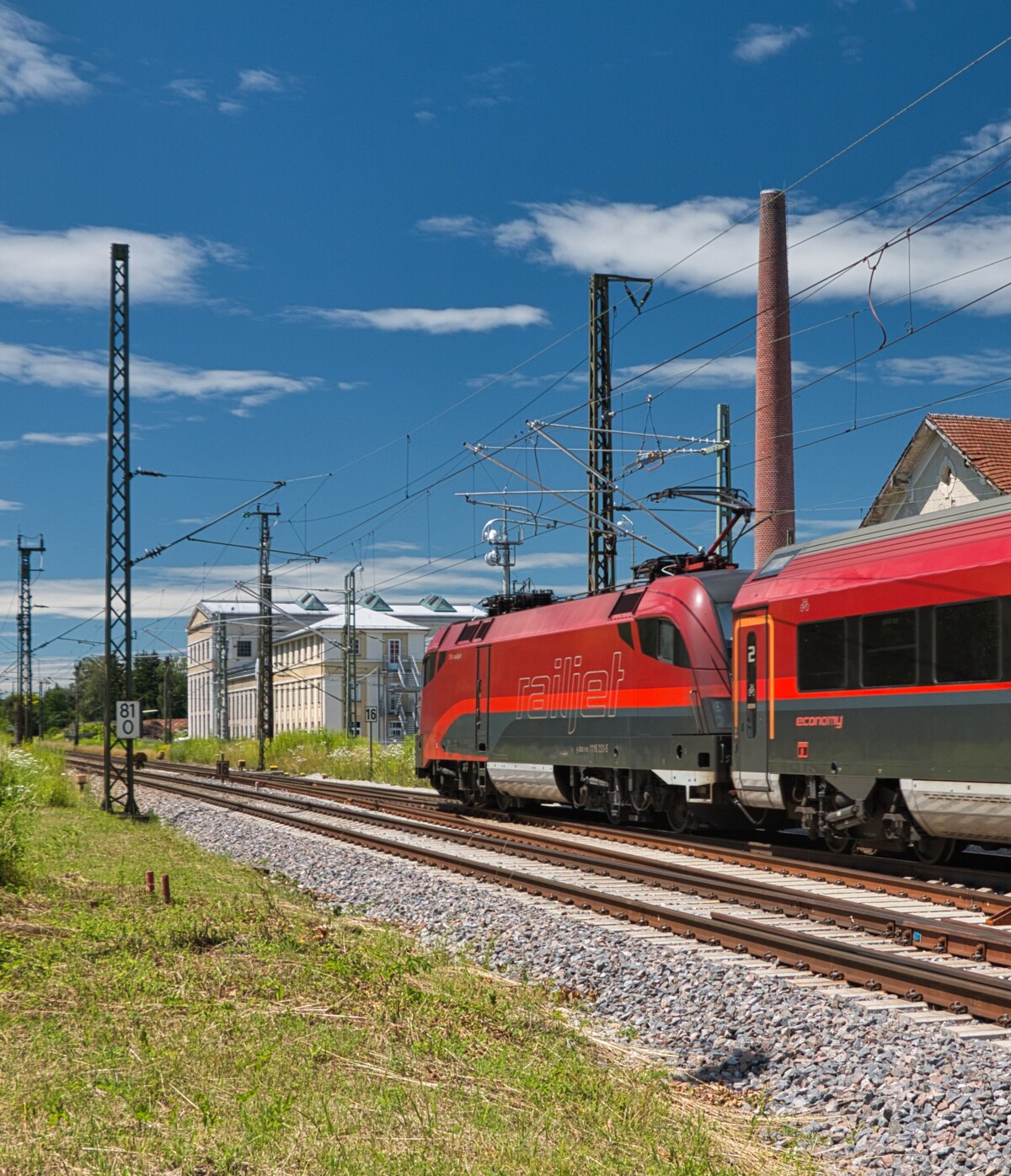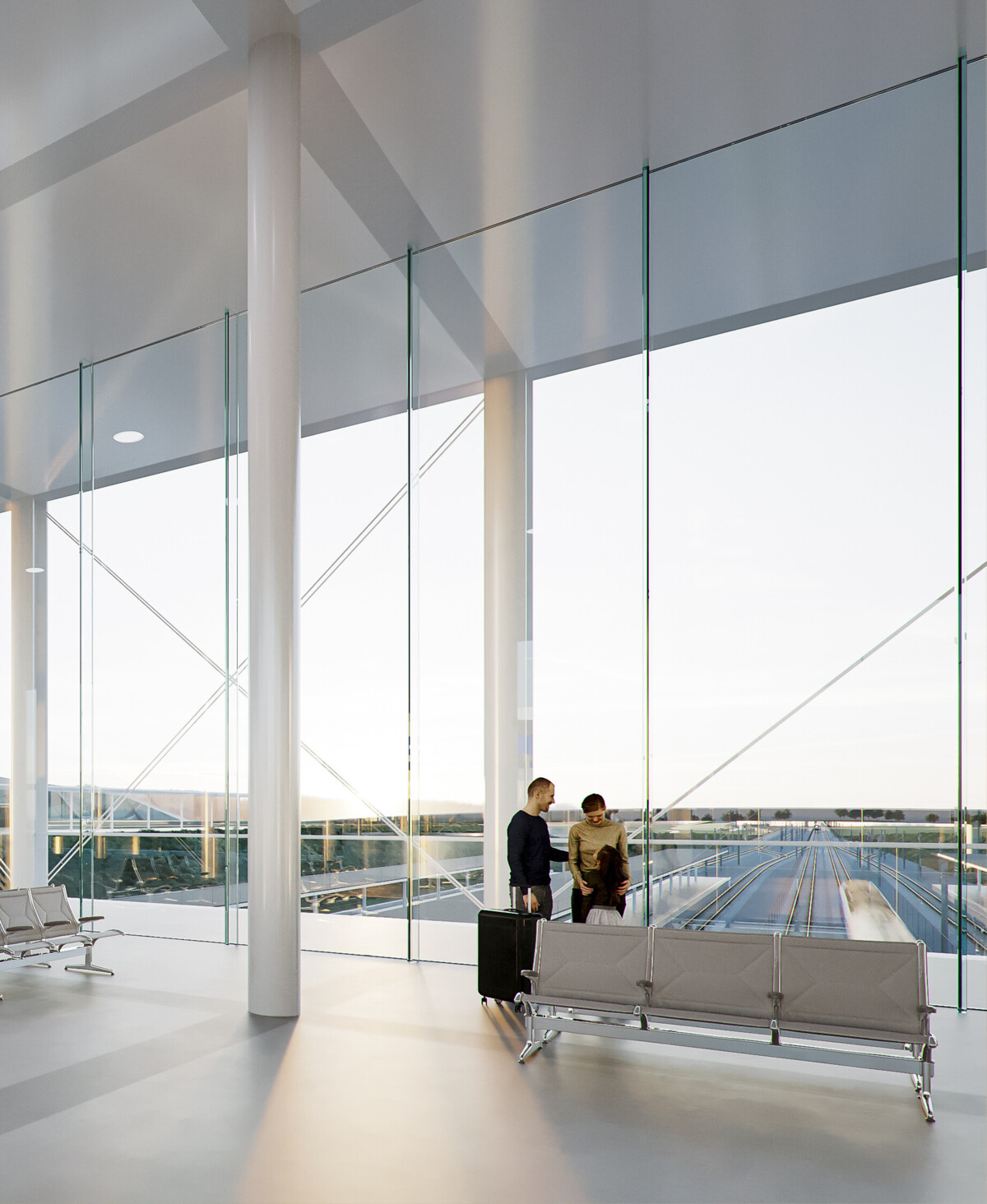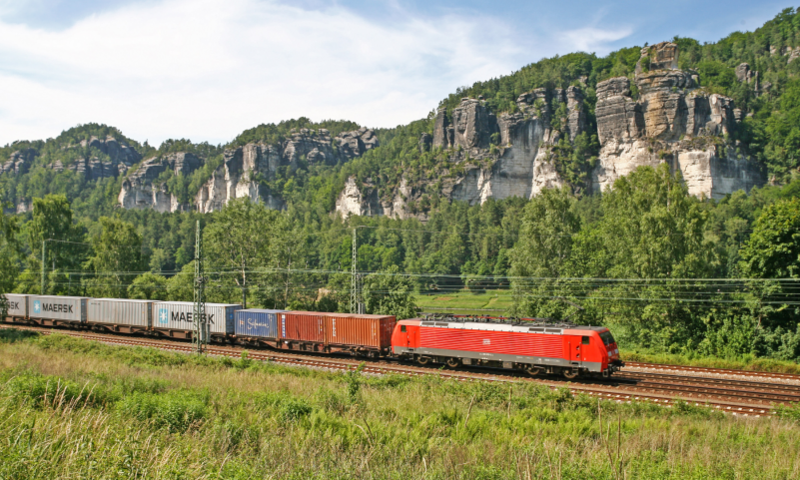Possible routes of the new rail line
The new Dresden – Prague line, which will have a total length of approximately 150 km after completion, has been divided into five planning sections. The heart of the project is the new double-track line between Heidenau and Ústí nad Labem.The Erzgebirgstunnel is approx. 30 km long and runs from Heidenau almost all the way to Ústí nad Labem on the Czech side. Therefore, Germany and Czechia are working closely together for its realisation. Have a look at the map and find out more details on the planning!
German side: preferred variant is the full tunnel option
In November 2023, DB InfraGO AG announced its preferred option for the route on the German side: the full tunnel variant. Until then, two different tunnel variants have been investigated in depth – the full tunnel and the partial tunnel option.
The partial tunnel option would begin in Heidenau with a short tunnel section which will afterwards run across the Seidewitz valley to Goes (Dohma) with a viaduct of approximately 490 m in length. The full tunnel variant will run completely in a tunnel through the Ore Mountains directly after Heidenau. Both variants have the same routing on the Czech side, it leads towards Ústí nad Labem and the tunnel ends south of the I/13 road.
Collaborative decision-making
Participants of the dialogue forum and technical experts, together with DB, collected and discussed aspects (criteria) from the areas of environment, nature, and people and infrastructure in five meetings. In January 2023 they adopted the catalogue of criteria for comparing the route options.
After the weighting of the respective criteria was discussed within the dialogue forum, the route options were assessed on the basis of the criteria. This evaluation served as a basis for the decision on the so-called preferred variant.
The working group for the catalogue of criteria serves as a consultation. In this way, Deutsche Bahn benefits from the thoughts and suggestions of the participants, while the process of finding a preferred variant becomes transparent for them through the exchange. Criteria can include, for example, the crossing of biotopes or the impact of the route on road traffic.
To the final catalogue of criteria for infrastructure [DE]
To the final catalogue of criteria for environment, nature, and people [DE]
However, the preliminary planning will probably not be completed before the end of 2024. After that, the decision on a definite route will be made.

Czech side: three options for the Středohorský tunel
The central element of the route section through the Central Bohemian Highlands from Ústí nad Labem to Lovosice/Litoměřice is the Středohorský Tunnel with a length of approximately 18 km. The construction of the tunnel is planned as two parallel single-track tunnels for passenger and freight traffic. Three different options are currently being examined.
The tunnel mouth will be east of Litoměřice. From this point forward, the new line will be connected to the existing Kolín-Děčín line and will be exclusively used for passenger traffic at speeds of up to 320 km/h all the way to Prague. A total of 100 km of new line will be built on the Czech side.

Measures on the route sections
Approx. 18 km expansion of existing line for passenger and freight transport
Dresden central station and Dresden-Niedersedlitz
There will be a speed increase for freight trains to and from Heidenau from 60 to 80 km/h, therefore a re-routing of tracks to increase the curve radius is necessary. An additional track for overtaking in Dresden-Reick will be built. Furthermore, there are two measures to increase the capacity: equipping the line with the European Train Control System (ETCS) and block compression so that trains can run at closer intervals.
Impact on Dresden
There will be an increase in traffic as well as an increase in the passenger transport capacity.
The existing two-hourly frequency of the EC Dresden – Prague will be enhanced to an hourly frequency. There are possible further increases in long-distance passenger rail traffic due to new services planned in the Deutschlandtakt, which could run to Dresden-Reick. The new line also causes an increase in freight traffic in the section Dresden – Heidenau by approx. one third.
Heidenau station
The reconstruction of the Heidenau station and the stop Dresden-Zschachwitz are necessary due to traffic requirements: there has to be a shifting of the tracks and an extension of the tracks within Heidenau station (with the full tunnel variant, overtaking tracks are located within Heidenau station). Further, the track spacing will be widened and new tracks will be constructed. The bridge over the "Sporbitzer Straße" will be completely rebuilt.
Integration of the new tracks in Heidenau
The bridge over the "Geschwister Scholl Straße" will be rebuilt. The new line will be routed over the existing line at the level of the "Pechhütte", with a ramp and a new crossing structure. The new line will also be routed over the S172 road, where a new bridge will be built.
At least 30 km long, cross-border Erzgebirgstunnel (joint planning area); approx. 18 km on the German side – making it the longest railway tunnel in Germany upon completion – and approx. 12 km on the Czech side.
Erzgebirgstunnel: 30.4 km length
Overtaking station: in Heidenau
Speeds: 200 km/h for passenger transport
Equipment: European Train Control System, ETCS (Level 2)
Integration: double-track before the Erzgebirgstunnel
Approx. 10 km new and upgraded line, new high-speed railway station in Ústí nad Labem centre.
Approx. 22 km of new and upgraded line with approx. 18 km of tunnel through the Central Bohemian hills.
* VRT (Vysokorychlostní trať): translated high-speed line
Approx. 57 km of new line, new high-speed railway station in Roudnice nad Labem.
* VRT (Vysokorychlostní trať): translated high-speed line
Construction sectors between the border and Prague
With the opening of the high-speed line, the travel time of express trains from Prague to Ústí nad Labem will be reduced from the current 72 minutes to 26 minutes.
The new Dresden – Prague line will be accompanied by numerous modernisation measures on the Czech side, which will not only accelerate passenger traffic towards Germany, but also significantly improve transport connections to Northern Bohemia. Faster connections to other parts of the region will be ensured by a branch to Louny and Most, which is being prepared in the next phase of the construction of the high-speed network (VRT).
Two large VRT terminals are planned on the route from Prague to Dresden, which will play a key role in transfers between long-distance and regional trains and between other means of public and private transport. The VRT terminal Roudnice nad Labem will be built in the south of the Ústí nad Labem region, the other VRT terminal is planned in Ústí nad Labem.
After the Středohorský Tunnel there will be a new high-speed section connecting Lovosice, Litoměřice and Roudnice nad Labem with Prague.
In addition, the Poohří high-speed line is planned as a branch from the Prague – Dresden main line, for which mixed operation of freight and passenger trains is planned. The section will end with the connection to Most station.


